Pink turnip pickles are a delicious anti-inflammatory condiment, made with turnips and beets. A great gut healthy snack, and perfect with meals like chicken shawarma too! Vegan, paleo, and Whole30, too.
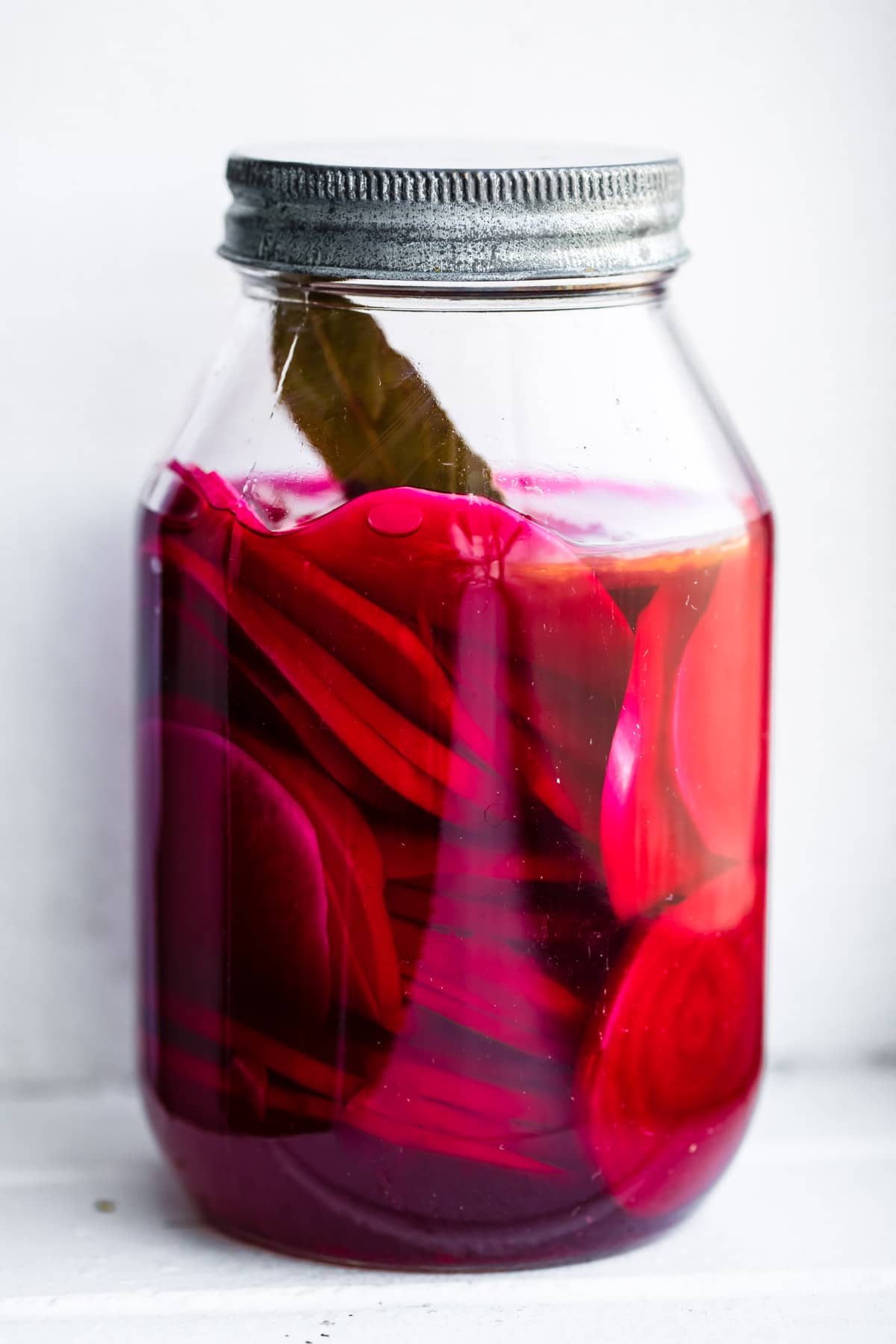
Here on the CC blog, we talk a lot about reducing inflammation and gut healthy foods. This is mostly because so many people have gut issues as a result of poor eating habits .
So, because of this, there are several anti-inflammatory meal plans on the site already, and there will be a NEW one here at the beginning of January!
Our focus/topic of the month will be nightshades. We’ll explain what nightshade vegetables and fruits are, and how they can affect your health.
Plus, our anti-inflammatory gluten free meal plan that month will have loads of NEW recipes that include nightshade-free substitutes!
I’m giddy to share an inside glimpse to that plan now, with this recipe for pickled turnips, or as I prefer to call them – PINK PICKLES!
What are turnip pickles?
Aside from being a delicious gut healthy snack, you mean? Well, this nightshade free condiment / snack food combines the healthy goodness of healthy veggies with probiotics.
After sitting for a few days in a vinegar brine solution, they become pickled turnips and beets. OR, you can wait a few extra days for them to ferment.
What’s the difference between pickling and fermenting?
Glad you asked!
Fermenting involves pickling, but without vinegar or heat. Lactic acid fermentation is when yeast strains and bacteria convert starches (like starching vegetables) or sugars into lactic acid, no cooking or heat involved.
Fermented foods, such as kimchi and sauerkraut, are helpful in reducing inflammation and are great for gut health because they are loaded with probiotics. Easy to make, but they require a little more time and patience!
Vinegar pickling (quick pickling) involves heating a brine made with vinegar, then adding a fruit or vegetable to “pickle.”
The acid from the vinegar kills a lot of the bacteria (good and bad bacteria), but that means no fermentation takes place. No fermentation = less probiotics. Make sense?
There are wonderful health benefits for both ancient food preservation techniques, it just comes down to convenience and what you’re aiming for (nutrition wise) .
Note: I show the quick pickling method below, but the fermentation process will also be in the recipe card! Same ingredients, minus the vinegar.
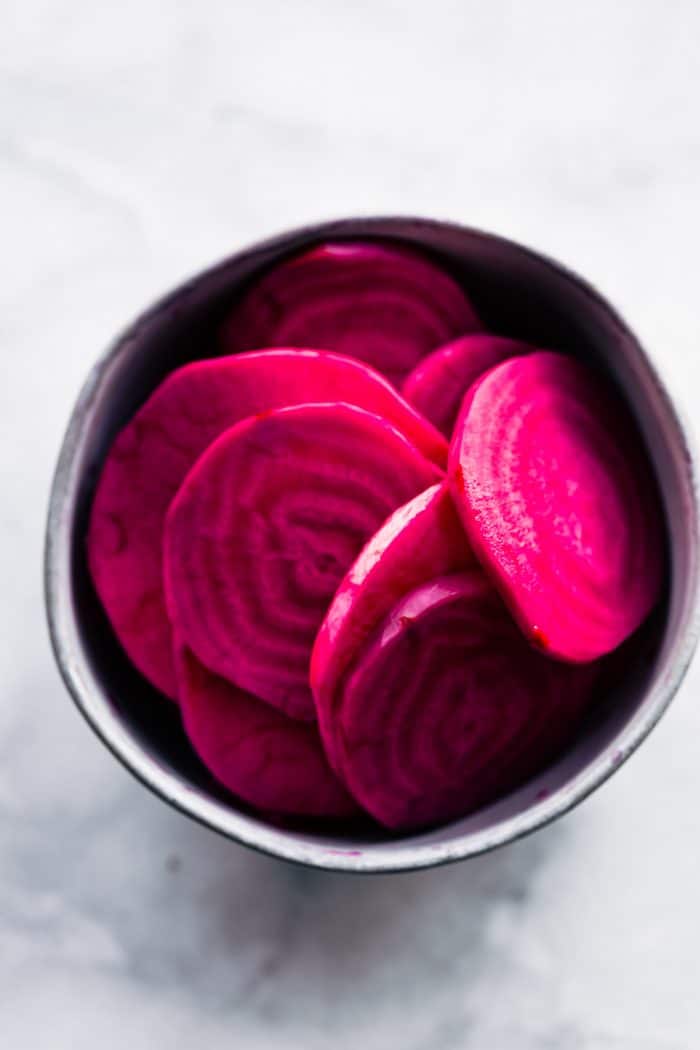
Benefits of beets and turnips
Cruciferous vegetables, which include veggies like Brussel sprouts, radish, broccoli, cauliflower, and turnips, have anti-inflammatory properties and glucosinolates. They fight free radicals in the body, and are good for gut health! Plus, they fight bloating, while also being high in fiber.
Beets are also high in fiber, and contain a good source of iron, potassium, vitamin C, B-vitamins, and more! Win win!
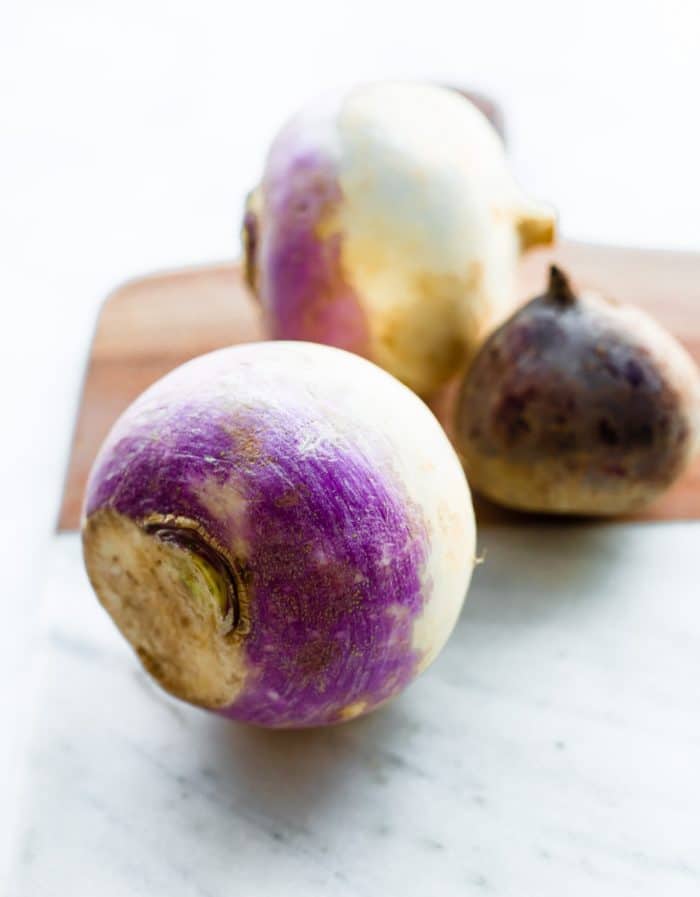
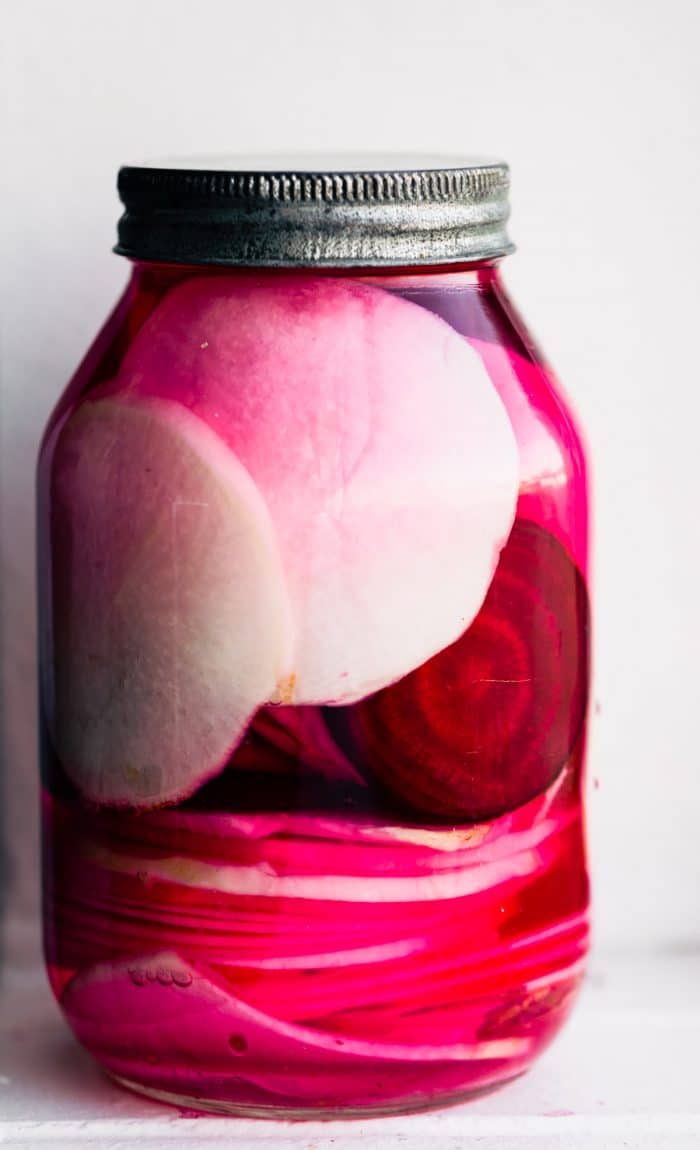
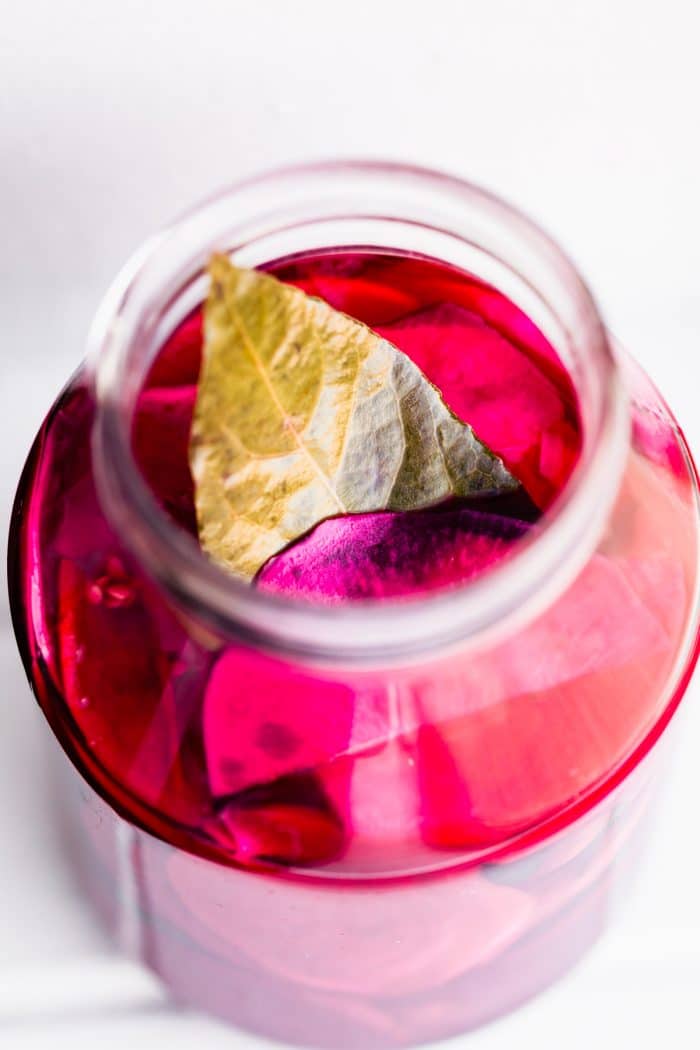
INGREDIENT NOTES
- Purified water– Tap water is fine, but if you have a lot of chlorine or other unhealthy chemicals in your city water, you should probably use purified.
- Optional sugar– We only use a teaspoon of sugar, but it helps balance out the tartness of the brine and adds a touch a of sweetness to the turnip pickles. You can substitute it with any cup-for-cup granulated sugar substitute, like xylitol.
- Vinegar (for the quick pickle method)- This is one recipe where you really need to use white vinegar. Apple cider vinegar will give the pickles an unpleasant flavor.
- Red beet– To have that gorgeous pink color, you need to use red beets. Golden beets are delicious in recipes like this crockpot quinoa pilaf though!
- Turnips
- Optional jalapeno- You can use either green or red ones, but omit the jalapeno if you need this recipe to be nightshade free.
The process of making pink pickles
Watching the process of pickling process is fun. Foods stored in brine go from raw and hard to soft and sassy in a matter of four to five days, and sometimes longer.
DAY ONE
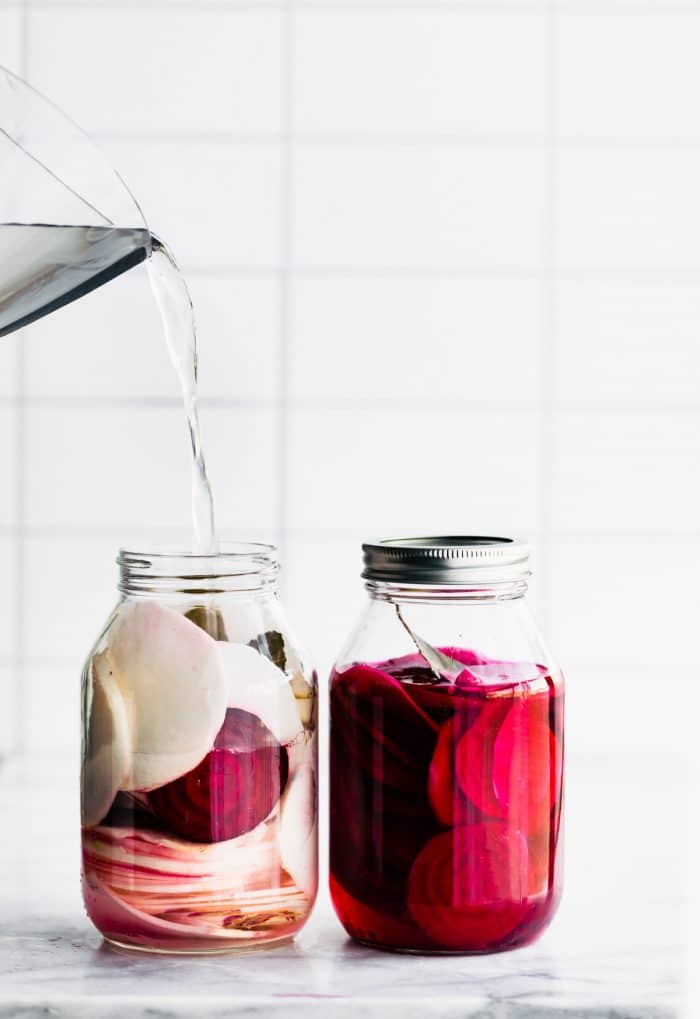
DAY THREE
The veggies will be a little softer at this stage, but not quite “cooked” yet. After four days, go ahead and open the jar for a taste test.
If they are soft enough for your liking, you are good to go! If not, let them sit for another day or two.
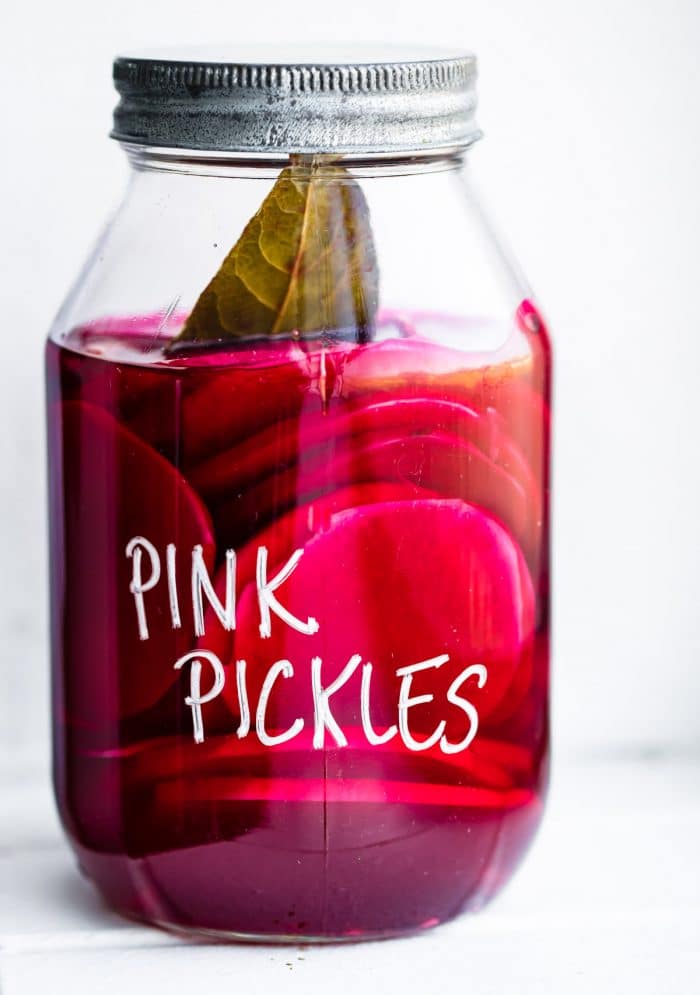
DAY FIVE – READY TO EAT!
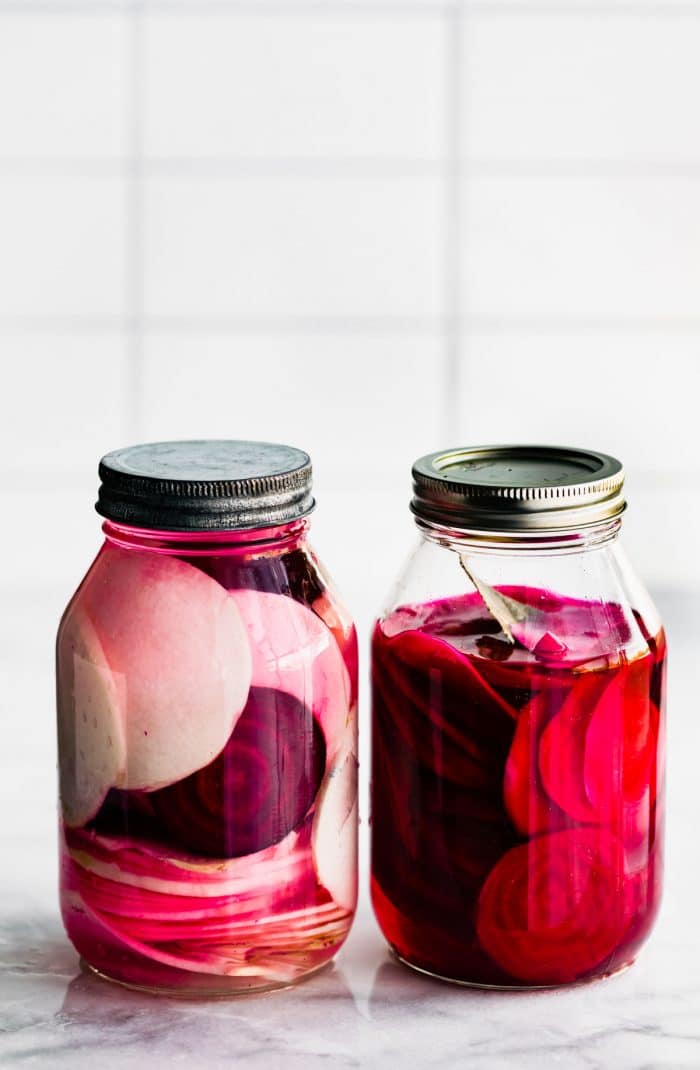
FAQ
Wait, Lindsay. Is it true… are beets a nightshade?
I am SO glad you asked!
There is some controversy on this, which we’ll cover in more detail in January. In the meantime, know that the answer is beets are NOT a nightshade.
Because of their red color (many nightshade foods are red), beets are often mistaken as being a nightshade vegetable. While they are not in the Solanaceae family of plants, they do have some of the properties of a nightshade plants.
So, if you’re sensitive to nightshades, it is in your best interest to test your reaction to beets before making this recipe.
What do pickled turnips taste like?
The flavor is slightly sweet from the sugar, but really, the flavor is more savory.
The garlic flavor really shines, and if you use jalapeno, you will definitely taste the kick of spicy heat.
All in all, these pickles are a winner, winner, nutritious condiment or snack before, during, or after dinner!
Print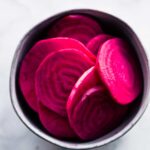
Quick Pickled Turnips (Pink Pickles)
- Total Time: 5
- Yield: 8 servings 1x
- Diet: Vegetarian
Description
Pink turnip pickles are a delicious anti-inflammatory condiment, made with turnips and beets. A great gut healthy snack, and perfect with meals like chicken shawarma too! Vegan, paleo, and Whole30. Fermented pickle version included.
Ingredients
- 12–14 ounces purified water
- Optional: 1 teaspoon sugar
- 2 ½ Tablespoon Kosher salt
- 1 bay leaf
- ½ cup white vinegar (for quick pickling)
- 1 small red beet, peeled and sliced
- 2 turnips (about 1 pound), peeled and sliced
- Optional: jalapeño, sliced lengthwise (Omit for nightshade free)
- 1 clove garlic, chopped
See notes for lacto- fermented pickled turnip option.
Instructions
- Add beet, turnips, jalapeno (if using), and garlic to a heatproof jar or container. Set aside.
- In a medium saucepan, bring salt, sugar, bay leaf, and 12 ounces of purified water to a boil, stirring occasionally to dissolve salt and sugar. Turn off heat and let mixture cool down for 5 minutes, then stir in vinegar.
- Pour pickling liquid over the contents in the jar, and ensure that the turnip and beet slices are submerged completely in the brining liquid. Let it cool, then close the jar and place it in a dark area for 5 to 7 days. (see note 1)
- For best flavor, refrigerate before serving.
- Store in a covered jar or container in the refrigerator for up to one month.
Notes
- The quick pickled technique for turnip pickles are normally ready within 4 to 5 days, but taste at day 4 for flavor and texture. Depending on the thickness of the slices, you may need to let them sit for an extra day or two.
- For Lacto-FERMENTED Pickled Turnips, skip the vinegar and use 2 cups of distilled at room temperature water along with remaining ingredients. No cooking involved. Submerge beets and turnips completely in the brining liquid. Close the jar and place it in a dark area for 10-14 days. Taste around day 6 to check progress.
- The garlic flavor really shines, and if you use jalapeno, you will definitely taste the kick of spicy heat.
- Prep Time: 20 minutes
- Cook Time: 10 minutes
- Category: Snacks
- Cuisine: American
Nutrition
- Serving Size:
- Calories: 20
- Sugar: 2.5 g
- Sodium: 1200.3 mg
- Fat: 0.1 g
- Saturated Fat: 0 g
- Carbohydrates: 4 g
- Fiber: 0.9 g
- Protein: 0.5 g
- Cholesterol: 0 mg
Alright my friends, have a wonderful holiday weekend! May it be pretty in pink (and green & red)! 🎄
Cheers,
LC
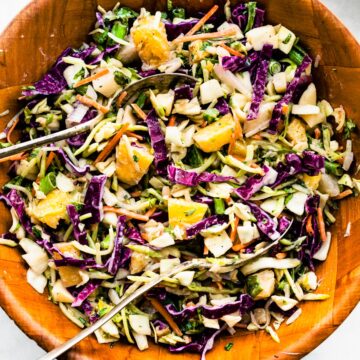
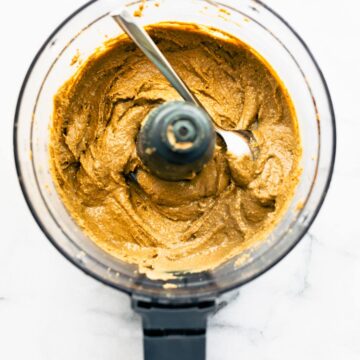
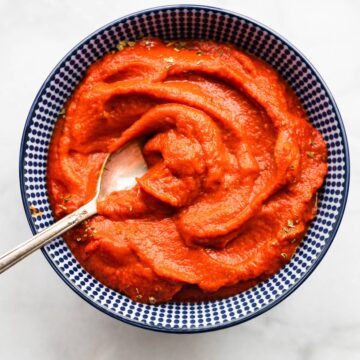
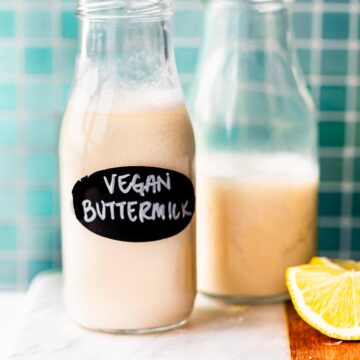
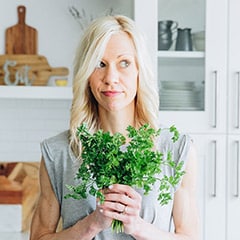
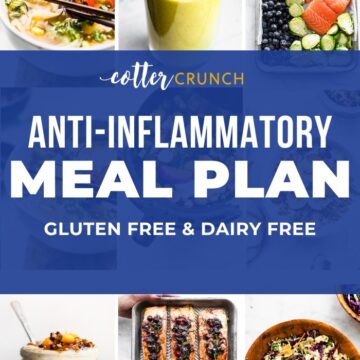
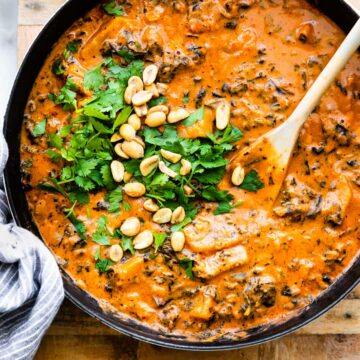
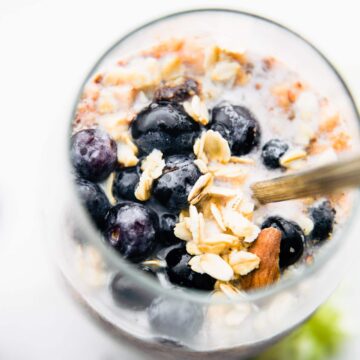
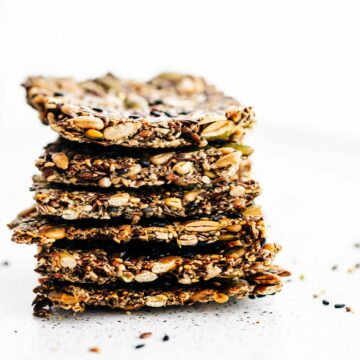
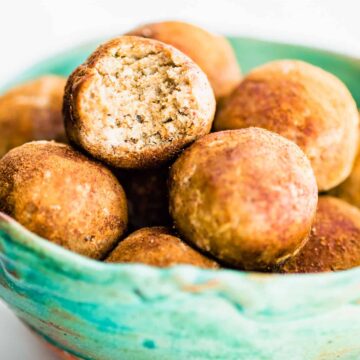
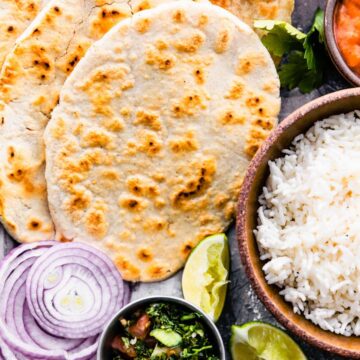
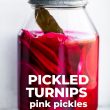
This looks great. I have never fermented veggies, so my question is regarding closing the jar. Should it be closed tight, or should there be some way for the gas build up to escape. For example, if using a mason jar, should the ring be tightened completely, or should it have room for the lid to move? Thanks in advance!
I usually “burp” the jar after a day of fermenting at room temp, just to check progress and smell check. Once the taste is to your liking, you can seal it up and place in fridge. Does that make sense Gretchen? Check out my sauerkraut post for some of those tips too. 😉
Greetings,
Thanks for the recipe. I’ve looked through the comments, but can’t find the answer to this question — how do you get them to submerge? They float:) First time doing this….
No prob! They should submerge more once they start to ferment, day 2 or so. Did you use beets as well?
Sumptuously! They are easy to make and are just great!
I’m so glad you enjoyed them!
Thanks for sharing your precious time to create this post, It so informative and the content makes the post more interesting. really appreciated.
I’m not a fan of beet although it’s good for health, but I like pickles, thank you for the nice recipe, I will definitely try this.
Beets aren’t everyone’s favorite, but you’re right- they have a lot health benefits! You can certainly just pickle the turnips without the beets. The only difference is that they won’t be pink! 🙂
They look so beautiful, I really can’t afford to eat them
I already love fresh beets, and as pickled will be fun, and definitely jalapeno – love that this and the turnips are anti-inflammatory, thank you!
I love how easy this is! Thanks for sharing the recipe!
Fabulous! They are so easy to make and absolutely gorgeous!
This looks great but where is the recipe? I can see the ingredient…water..vinegar..etc and the photos but no measurements
Hey Lynn! We just emailed you! Thanks again for letting us know about the glitch. Happy new year!
These are so pretty to look at and definitely something I’ll be trying!
OMG Lindsay, these are amazing, and so PRETTY!
Pickle looks so yummy and spicy. I will make this pickle.